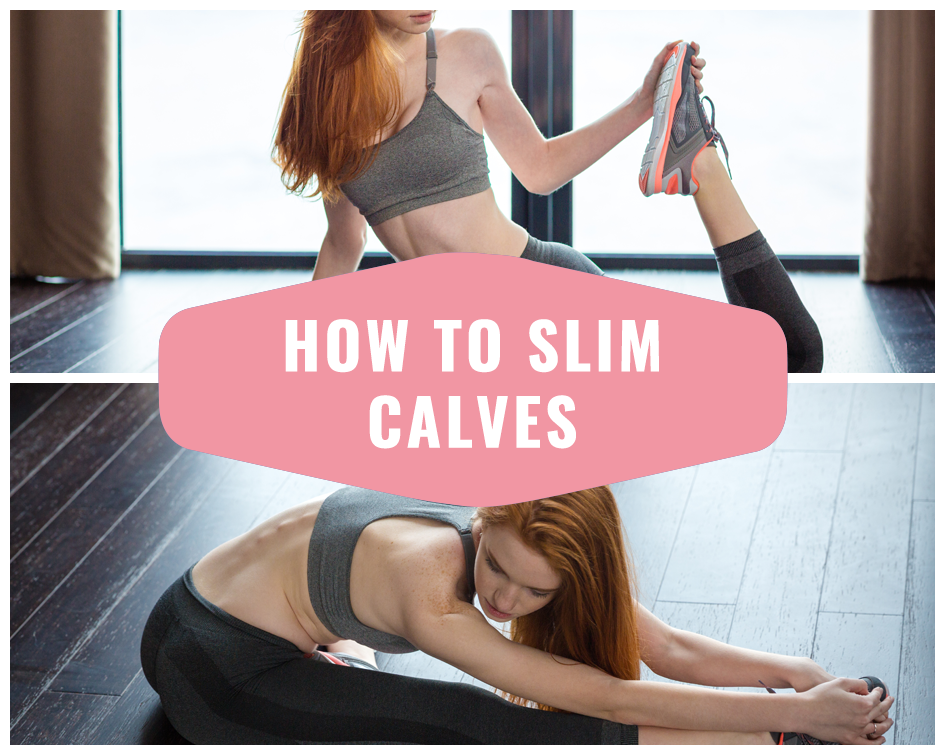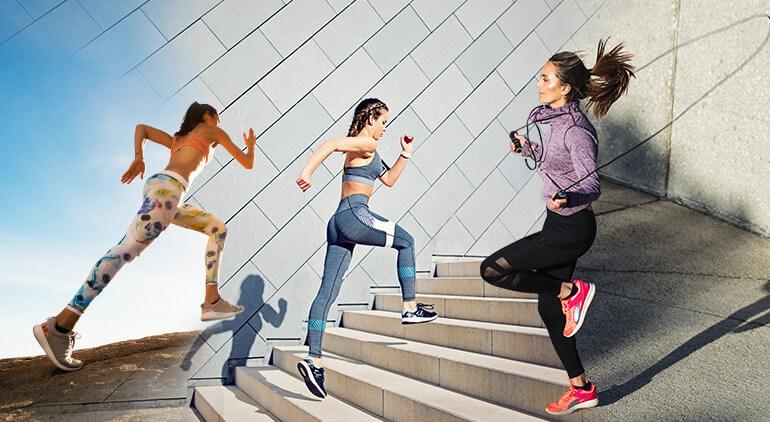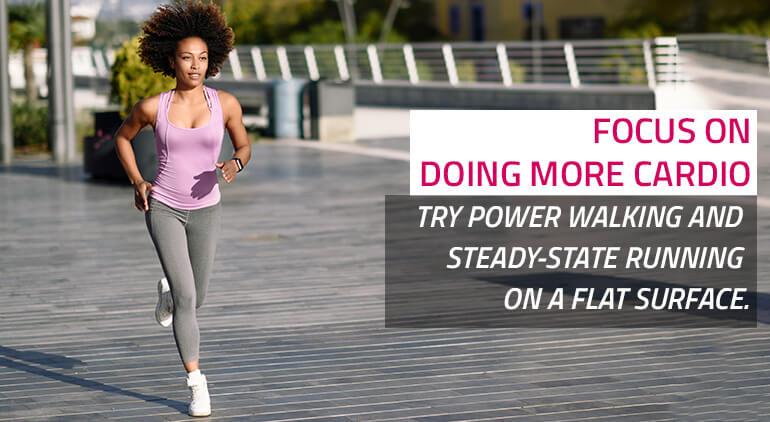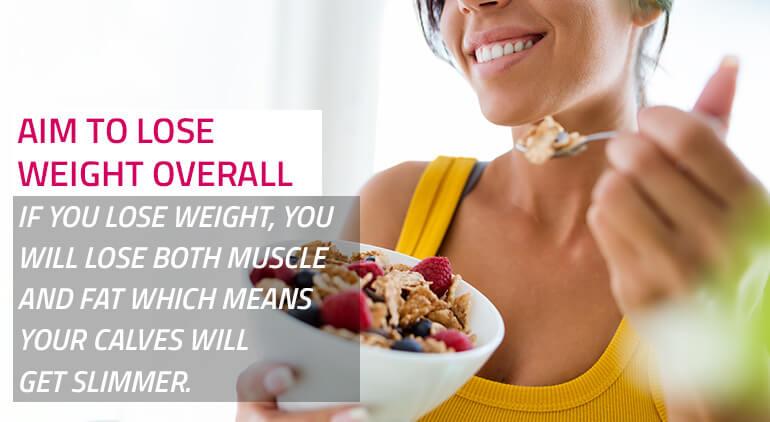
HOW TO SLIM CALVES
Share
HOW TO SLIM CALVES
I know we have a lot of information on our blog regarding how to get lean legs and slim down your muscular thighs, but we haven’t talked too much about calves. That is because it is quite a challenging topic.
We do get a lot of questions about how to make your calves smaller, and especially how to slim calf muscles.
That seems to be a common concern with girls, so I thought I would do a blog post about it for you.
Let’s start by understanding the reasons why you may have big calves in the first place.
WHAT CAUSES BIGGER CALVES?
1. GENETICS
This is why this a hard topic. A big factor with calf size is genetics. Take a look at your parents, or your siblings, calves – do they seem the same size as yours?
If you were born this way and haven’t done much exercise that could change the shape of your calves, chances are that you won’t be able to make significant changes (but minor changes might be possible).
2. FAT
If your calf size is due to fat, then losing weight overall will definitely help slim your calves.
But keep in mind that legs are the hardest place to lose fat and tend to be the last place for women, so it will take more time to see the results.
3. MUSCLE
If you’ve done a lot of workouts that target your calves, especially heavy ones, then it is very possible your calves have increased in size due to muscle (especially if you have a genetic predisposition for more muscular calves).
In that case, you can avoid certain exercises to prevent your calf muscles from getting bigger. By doing this, you might also see a minor decrease in their size, especially if your calves have been ”pumped up’’ from workouts.
ARE MY CALVES MADE OF MUSCLE OR FAT?
It’s important noting that it’s very hard to really build up calf muscles unless you have a genetic predisposition.
If you’re not sure if your calves appear bigger from fat or muscle, you can check your BMI (body mass index) – that will give you some idea.
For pro athlete women, 14% to 20% is the average body fat, whereas for someone who works out regularly – a few times a week – that range is 21-24%.
I also have an easy test applicable for calves: flex your calves. The hard bit is muscle. The soft stuff over it is fat.
WHY DID MY CALVES GET BIGGER FROM WORKING OUT?
You could have caused your calves to increase in size due to the type of exercise that you have been doing, especially if you are a mesomorph or endomorph.
You see, there are 3 body types and they all lose weight and build muscle differently, and 2 out of 3 body types can bulk up easily.
If you don’t know your body type, I have created a special quiz that will help you learn your body type in just 2 minutes.
You will get also get tips on how to eat and train according to your type to get the best possible results. And it’s completely free! :)
I will discuss in detail the type of exercises that may cause your calf muscles to increase and which you should avoid.
If your calves were previously slim and exercise was the reason they bulked up, then you can definitely get them back to the way they were before!
HOW TO SLIM DOWN MUSCULAR CALVES
There are 3 things you need to do:
- Stop doing whatever exercise is making your calves bigger. The main way to reduce your calf muscles is by using them as little as possible and giving your muscles a chance to reduce on their own.
- Do more low-intensity cardio – This will also help you lose excess fat on your lower half without building extra muscle.
- Focus on losing weight overall – This will help you lose excess fat on your lower half (but remember, it will take a while). To do this, you need a good diet and consistent exercise.
STEP 1: STOP DOING EXERCISES THAT WILL PUMP UP YOUR CALVES
All the exercises below are great for overall fitness and fat loss, but if your main goal is to slim your calves, then you should definitely avoid:
1. CARDIO AT INCLINE
Running does actually build some muscles in your calves, but running is so good for you, and good for slimming down your legs in general, that I would be hesitant to stop running.
That said, if it seems like your calves bulk up easily, I would make sure that you are always running on a flat surface – an incline will increase your calf size.
If you’re working out in the gym, avoid Stairmaster and running with an incline on a treadmill.
Also, running for a long-duration (steady-state cardio) will not generally build a lot of muscle as much as sprinting does, so I’d stick to that.
If you really don’t want to run, then walking is great – it will slim your legs overall and won’t increase your calf size. Just make sure it’s on a flat surface!
2. HILL SPRINTS OR ANY UPHILL EXERCISES
Just like cardio at an incline, anything that involves walking or running uphill will build muscle in your calves.
This includes hill sprints but also things such as hiking often (unfortunately) and step machine.
3. SKIPPING
Lots of women ask me if skipping is good for slimming legs. The answer is no, not really.
To make your legs and calves thinner, you really need to be walking and/or running.
Skipping uses mostly your calves, so it will bulk them up quickly if you have genetic predisposition.
It is a great exercise, though, so if you don’t care about calf size – go for it! If you do, better avoid it.
4. PLYOMETRIC / HIIT EXERCISES
As with skipping, lots of jumping exercises use your calf muscles and can make them bigger.
If you love HIIT, then you don’t necessarily need to stop if your focus is on making your calves smaller.
You can do some HIIT exercises, but I would avoid overdoing it on lower body plyometric exercises, such as jump squats, jump lunges and burpees, and anything that results in you landing heavily on your feet.
STEP 2: DO MORE LOW-INTENSITY CARDIO
I talk a lot about the benefits of cardio for fat loss and lean legs, and in this case, more importantly, reducing the muscle from your legs.
Low-intensity cardio burns fat (and in some cases, even muscle) and will decrease your overall body mass, so it will help make your calves smaller.
Try power walking, steady–state running (both on a flat surface) or swimming –a great cardio workout.
USE THE TREADMILL
I know a lot of women notice that their calves are smaller when they run on a treadmill.
The only thing I can attribute this to is the fact that the treadmill moves underneath you, so you probably don’t need to engage your calf muscles as much as running outside when you need to push off the ground harder.
For me, I don’t experience any physical difference between running /walking outside or on a treadmill. But it’s really up to the individual.
ADJUST YOUR RUNNING TECHNIQUE
Avoid running on your toes, as you will use your calves more this way. Run with a heel-to-toe strike motion and use supportive shoes.
Bonus tip: Try fasted cardio for quicker results.
STEP 3: FOCUS ON LOSING WEIGHT OVERALL
When you lose weight, you will lose both fat and muscle, so that automatically means your calves may look a lot thinner.
That said, you cannot spot reduce fat, so it all really depends where you tend to store fat and lose fat first.
For example, I lose weight from my upper body faster than my lower body. It helps to know your body type and how well you respond to certain diet and exercise regimes.
Remember – diet is the key to losing weight; exercise comes second. So, focus on eating fewer calories than you burn doing the day.
Sign up for our mailing list








